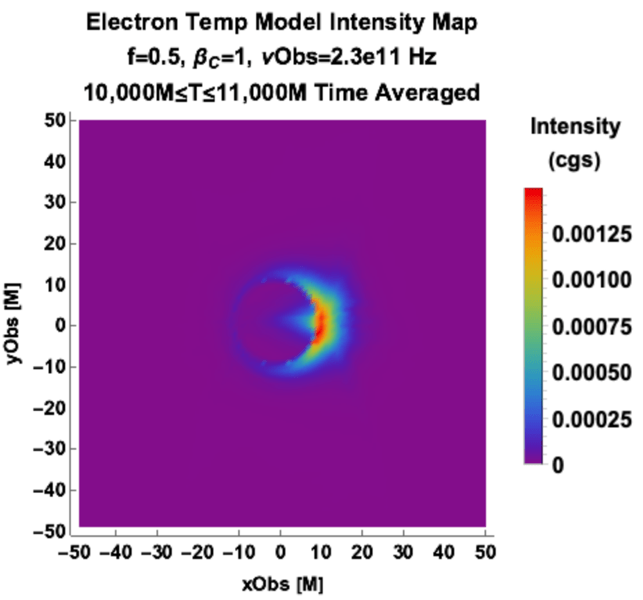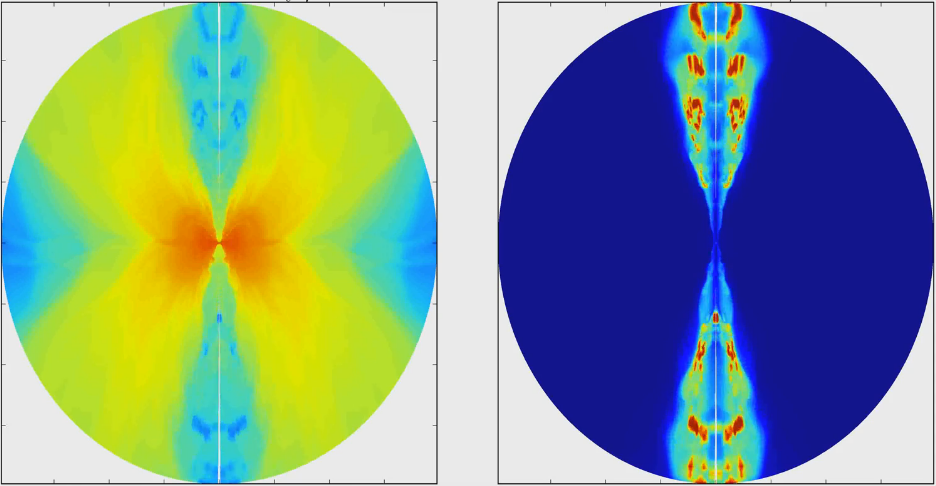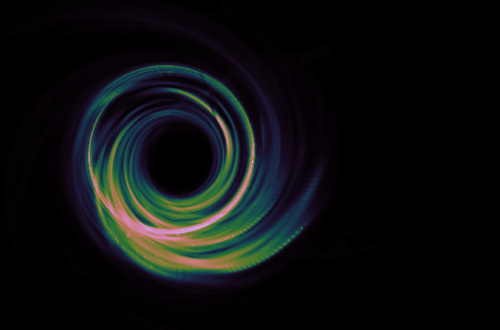By Dr. Richard Anantua
This past decade has been a landmark in the history of black hole astrophysics— bringing precise experimental confirmation to bear upon revolutionary predictions of Einstein’s general theory of relativity from just over a century ago. LIGO’s 2015 observation of the “chirp” signal characteristic of the merger of two black holes marked a 5.1 sigma detection of gravitational waves predicted by Einstein in 1916, and the first measurement of an astronomical signal outside the electromagnetic spectrum. In 2018, the European Southern Observatory’s GRAVITY (4 very large infrared telescopes) detected gravitational redshift from the passage of the star S2 at a near-relativistic speed of 0.03c near the pericenter of its orbit around the Galactic Center, confirming Einstein’s 1907 equivalence principle— a cornerstone of his 1915 magnus opus on general relativity.
These stunning observations provide virtually insurmountable indirect evidence for the existence of black holes— objects that warp the curvature of spacetime so strongly it forms a one-way boundary from which light cannot escape, called an (outer) event horizon. The direct observation of an event horizon from the shadow it casts on nearby hot, magnetized plasma would await the Event Horizon Telescope’s (EHT) 2019 image of the central engine of the giant elliptical galaxy M87. The EHT is a network of intercontinental baselines forming a sparse radio detector with an
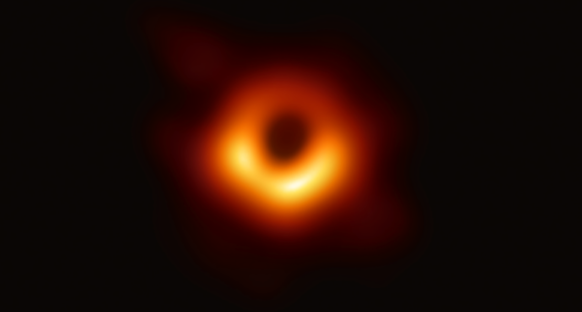
Figure 1. EHT image of the shadow of M87’s 6.5 billion solar mass black hole
effective aperture size of the Earth’s diameter. The EHT provided data from which an image of the region around M87’s supermassive black hole could be reconstructed using methods broadly falling into two classes: inverse modeling, which “unblurs” the data by deconvolving it with the point spread function intrinsic to the observing instrument; and forward modeling, which selects the most likely image pattern under assumptions favoring smoothness, sparsity or maximum entropy. Images generated using all of these techniques have shown a remarkably robust fidelity to the South-brightened ring of the method-averaged image Fig. 1; and also to synthetic images generated from general relativistic magnetohydrodynamic (GRMHD) simulations of magnetized plasma accreting onto a rotating black hole powering relativistic jets via the Blandford-Znajek mechanism.
My research uses GRMHD simulations of jet (or outflow)/accretion flow/black hole (JAB) systems to facilitate imaging of the 4.1 million solar mass black hole in Sgr A* at our own Galactic Center. Though EHT has simultaneously collected data from Sgr A* and M87, imaging Sgr A* has posed unique challenges due to greater variability in the smaller source (the minimum dynamical timescale of an accreting black hole system is set by the light crossing time of its gravitational radius, which is proportional to the black hole mass). Thus, I use JAB GRMHD simulations resolving these timescales to model Sgr A*’s near-horizon emission. The process I use to “observe” the simulations converts GRMHD flow variables such as gas energy density and magnetic and velocity fields output by the simulation into emissivities and absorption coefficients used to compute synchrotron radiation, and comparing resulting images, movies, spectra and light curves (total image flux time series) to observations. Through movies we can show that several parametric models (including physics of turbulent heating and equipartition of particle and magnetic energy) aggregate into a few quasi-stationary morphological types, including the Anantua, Ressler & Quataert 2020-favored model of Fig. 2.
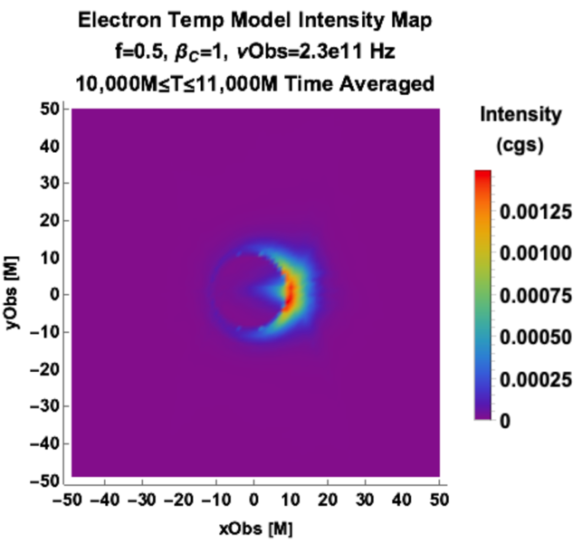
Preliminary analysis of light curves corresponding with these movies suggest Sgr A*’s variability may be primarily driven by the flaring motion of bright spots within a quasi-stationary ring-like structure. Going forward, “observing” simulations may be our most powerful tool for understanding the most fundamental processes underlying higher resolution images we are bound to see in M87, Sgr A* and a host of other sources in this new age of direct observations of black holes.


